INTRODUCTION
Being one of the largest cities in Vietnam, Ho Chi Minh is a pioneer in developing urban underground. However, construction of underground has faced many difficulties because of soft ground. The thickness of soft ground varies from few meters to more than 20-30m (NAWAPI, 2010). One of the most properties of soft soil which have a great influence on the instability of the construction is the consolidation properties (Radhika et al., 2017). Therefore, study on consolidation properties of soil should be taken into consideration.
In the world, the consolidation properties of soft soil were studied by some researchers. Larsson (1986) determined the consolidation properties of soft soil by laboratory experiments and field observations. The results indicated the main parameters of consolidation properties and confirmed that the consolidation properties of soft soil also consist of primary consolidation and secondary consolidation. Chu et al. (2002) studied consolidation properties and permeability of marine clay in Singapore and indicated that vertical coefficient of consolidation varied widely and ranged from 0.5 -2.0 m2/years. O’kelly (2006) investigated the consolidation properties of eleven different types of soft soil in both vertical and horizontal directions. The results showed that the structural characteristics, and the heterogeneity of soil greatly affected the results of the experiment. Bo et al. (2015) showed that large variation of coefficients of consolidation of the upper, middle, and lower parts of the marine clay in Singapore because of different soil structures. Al-Khafaji et al. (2015) reviewed and evaluated the relationship between compression index and liquid limit of previous authors. These relationships have a great influence by the mineral composition and there are many relationships with low correlations. Jain et al. (2015) also established a high correlation between the plasticity index (PI) and the compression index of the soil in river valleys in India. Bo et al. (2017) studied consolidation properties of soil by various experimental methods such as oedometer, constant rate of strain (CRS), Rowe cell and isotropic consolidation tests for undisturbed soil. The results showed that compression index varied widely and was affected by experimental methods and constant rate of strain experimental speed. Ahmad at el. (2016) studied the deformation characteristics of marine sediments in Malaysia and showed the change of pre-consolidation pressure, compression index, and swell index.
In Vietnam, soft soil widely distributed in deltas such as Red River Delta and Mekong Delta and its thickness drastically changes (Nu et al., 2020; Giao and Hien 2007; Nu and Thinh, 2020; Son et al, 2020; Duong et al, 2020). These soft soils are not suitable for construction and must be applied by ground improvement (Nguyen Thi et al., 2019, Nu et al., 2019, Nu et al., 2020). Nu et al. (2019), Nu et al. (2011) and Nu (2014) studied consolidation properties of soft clay soil (amQ22-3) distributed in coastal provinces of Mekong Delta. The results showed that these consolidation properties depend on location, depth, and organic, salt components in soil.
It can be seen that the consolidation properties of soil have been studied by many authors around the world. However, the consolidation properties of soil depend on many factors such as soil type, testing equipment. Therefore, further studies are still needed. In addition, there have not been any in – depth studies on the consolidation properties of soft soil in Ho Chi Minh City of Vietnam, which is the basis for the design of underground construction such as calculating settlement of buildings and predicating the time of consolidation of soft soil during excavation.
This paper aims at studying consolidation properties of soil through experiments of soft soil samples distributed in Ho Chi Minh City of Vietnam. This paper also determines the correlation between coefficient of consolidation and some criteria such as liquid limit (LL), water content (Wn) and void ratio (e0). These results will be applied in designing and constructing underground construction in Ho Chi Minh City of Vietnam.
MATERIALS AND METHODS
Materials
To study on soil consolidation properties, soil samples were collected at boreholes from various locations in Ho Chi Minh city of Vietnam. The sampling depth and the locations are shown in Table 1. The underground water varies from 0.5m to 1.5m and was used to calculate the effective stress and is shown in Figure 4.
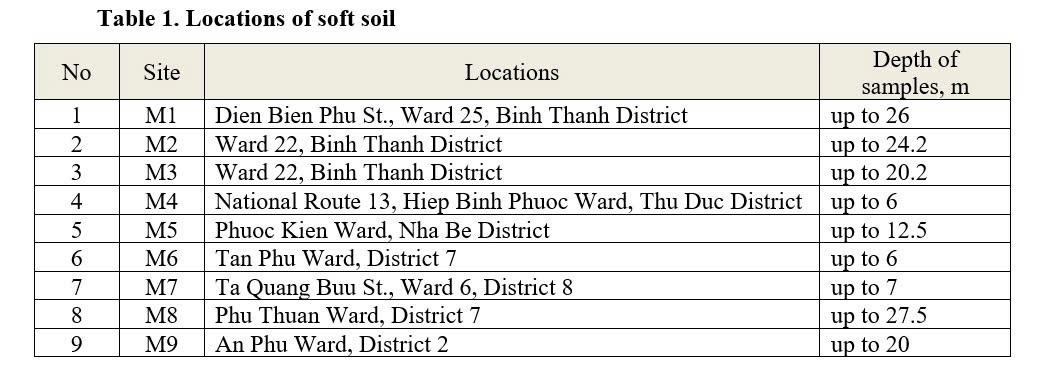
The soil samples were collected by piston tube and transported to the laboratory. The samples are maintained its original condition from the time of transportation, storage and opening of the test sample. Particle size properties, organic matter content, physical properties of soil, consolidation properties were determined. Particle size properties were performanced in accordance with ASTM D422. The liquid limits are determined in accordance with ASTM D4318 – e1.
Methods
Forty-two samples were determined consolidation properties of soft soil by Oedometer test according to ASTM D 2435 (Fig. 1). The experiment is conducted with many different pressures, the next stress level is twice the previous stress level. The applied compression pressures are 12.5; 25; 50; 100; 200; 400; 800, 1600kPa respectively, depending on sampling depth. Every applied pressure is kept until the degree of primary consolidation level reaches 100% or within 24 hours. During consolidation test, the indices on the strain gauges were investigated at times of 0.1; 0.25; 0.5; 1; 2; 4; 8; 15; 30; 60; 120 minutes; 4; 8; 16; 24 hours or 48 hours. After finishing at the last compression pressure level, soil sample was unloaded and rebound deformation were recorded. After that, consolidation parameters such as coefficient of consolidation CV, compression index CC, swell index Cs, pre – consolidation pressure (σc) were determined.
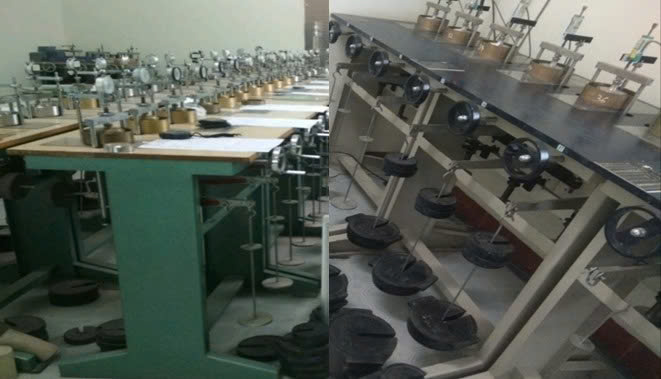
Fig. 1. Consolidation test equipment
RESULTS AND DISCUSSION
Composition and physical properties of soft soil
Particle composition and physical properties of soft soil are presented in Figures 2, 3.
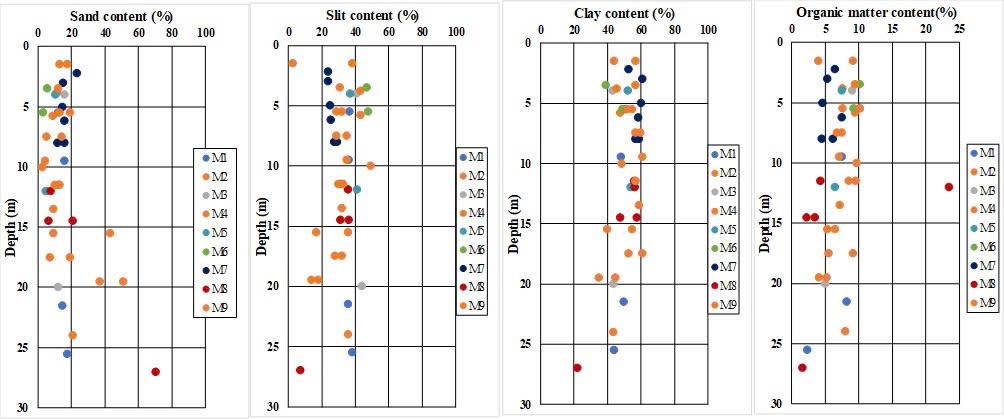
Fig. 2. Particle composition of sand, silt, clay and organic matter content of soft soil with depth (m)
As shown in Figure 2, it can be seen that the clay content is the largest component, varies from 22.4% to 61.2%, silt content changes from 20% to 40%, and sand content is varies from 2.5% to 70.4%. The organic matter content changes from 1.6% to 20.2%.

Fig. 3. Physical properties of soft soil
As shown in Figures 3, it can be seen that the natural water content is higher than the liquid limit and soils are in very soft state. Natural water content (W) of soft soil ranges from 30.7% to 117.8% with an average of 78.3%. Liquid limit (LL) varies from 29.0% to 92.1% with an average of 67.7%. Plastic limit (WP) varies from 19% to 57.9%, an average of 38.6%. Void ratio of soil is large, ranging from 0.927 to 3.094, an average of 2.109. The unit weight, specific gravity change from 1.39 g/cm3 to 1.81g/cm3 and 2.60 to 2.68g/cm3 respectively. Based on particle contents and atterberg limits, the soft soils are classified as fat clay (CH) or some Lean clay (CL) in accordance with ASTM 2487. These types of soil are not suitable for construction.
Consolidation properties of soft soil
Results of research on soil consolidation properties are shown in Table 2.
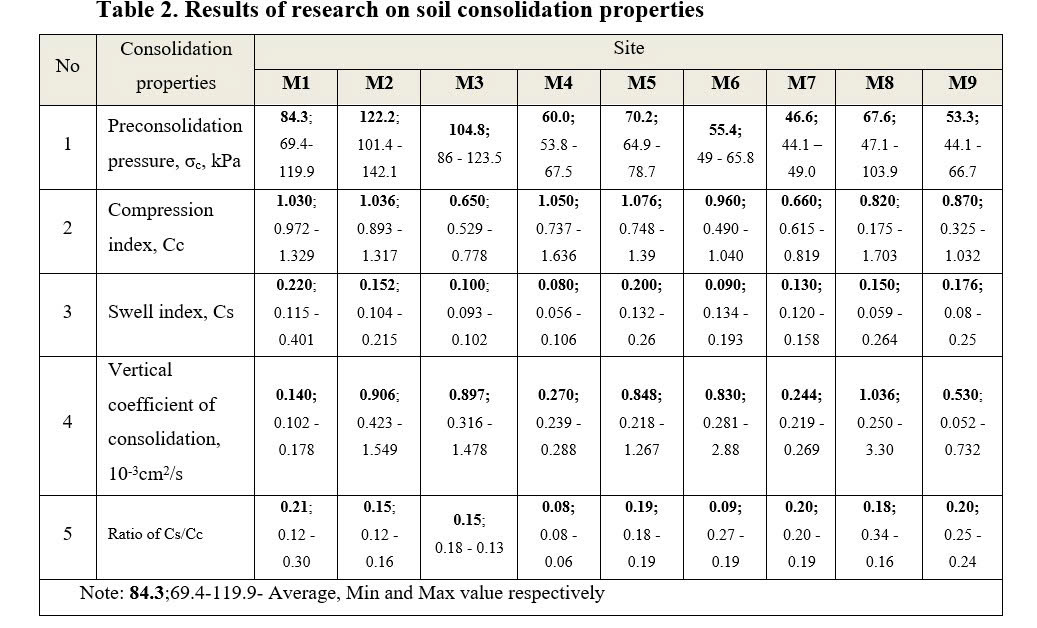
As shown in Table 2, it can be seen that soft soil at various locations had different consolidation properties. Compression index of soft soil varied widely. At sites M1, M2, M4, M5, compression index (Cc) were higher value than that of other sites, varied from 0.972 to 1.329, 0.893 to 1.317; 0.737 to 1.636 and 0.748 to 1.305 respectively. At sites M3, M6, M7, M8, M9 compression index was lower value than that at other sites, and changed from 0.529 to 0.778, 0.490 to 1.040, 0.615 to 0.819, 0.175 to 1.703 and 0.325 to 1.032 respectively. At site M5, compression index had the largest average value and at site M3, the compression index had the smallest value. This can be related to particle composition, water content, and organic matter content. At site M5, clay content and the natural water content, organic matter content were the highest. Otherwise, at site M3, clay content and natural water content, organic matter content were lowest. At sites M1, M2, M5, M6, M7, swell index (Cs) were higher value than that of other sites, varied from 0.115 to 0.401; 0.104 to 0.215; 0.132 to 0.26; 0.134 to 0.193 and 0.120 to 0.158 respectively. At sites M3, M4, M8, M9 swell index was lower value than that at other sites, and varied from 0.093 to 0.102, 0.056 to 0.106, 0.059 to 0.264 and 0.08 to 0.25 respectively. The ratio of Cs/Cc ranged from 0.06 to 0.34.
The coefficient of consolidation also varied from 0.052.10-3cm2/s to 3.3.10-3cm2/s. At site M1, the coefficient of consolidation was the lowest and varied from 0.102.10-3cm2/s to 0.178.10-3cm2/s. This can be due to the fact that the soil at sites M1 contained organic matter content and had high clay content. At site M8, coefficient of consolidation of soft soil had the highest and changed from 0.25.10-3cm2/s to 3.3.10-3cm2/s. The reason is that the soil at site M8 contained alternating layers of sand as well as small clay of 22.4%. Chu et al. (2002) investigated the vertical coefficient of consolidation of marine soft soil in Singapore and indicated that the Cv was very different with depth. The range of Cv value of upper layer is from 0.5 to 1.7m2/ year, otherwise the low marine clay has in the range of Cv value of 0.5 to 2.3m2/ year. Bo at al. (2015) determined the coefficient of consolidation of Singapore marine clay at Changi in Singapore and the results show that the upper clay layer had coefficient of consolidation of 0.47 – 0.60 m2/year whereas the lower marine clay had a Cv of 0.8–1.5 m2/year. The reason of difference in coefficient of consolidation of soft soil in upper layer and lower layer was due to the high sensitivity of the marine clay.
Figure 4 shows the variation of compression index Cc, coefficient of consolidation Cv and preconsolidation pressure σc of soft soil with depth. It can be seen that the compression index Cc does not change with increasing with depth. The coefficient of consolidation of soft soil was almost smaller than 0.7.10-3cm2/s and an increase in coefficient of consolidation of soft soil with increasing depth. The preconsolidation varied from 44.1 to 143.9 kPa and increases with increasing depth.
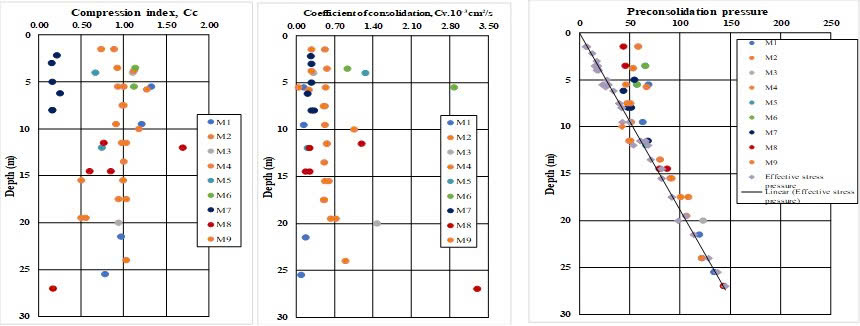
Fig. 4. Variation of Cv, Cc and Pc with depth
The variations in coefficient of consolidation with compression pressure are provided in Figure 5. As shown in Figure 5, the coefficient of consolidation decreased with increasing of compression pressure. If the compression pressure was lower than 50kPa, the coefficient of consolidation decreased rapidly. After that, the compression pressure was higher than 50 kPa (in normal consolidated state), the coefficient of consolidation decreased slowly. In case of void ratio decreased and the compression pressure increased, the permeability coefficient of soft soil decreased and resulted in a decrease in coefficient of consolidation. Moreover, the compression pressure increased, the soil particles tend to be more tightly arranged, resist the effects of external forces, and the total settlement and the amount of soft soil compressibility increased and resulted in decrease in the coefficient of consolidation.
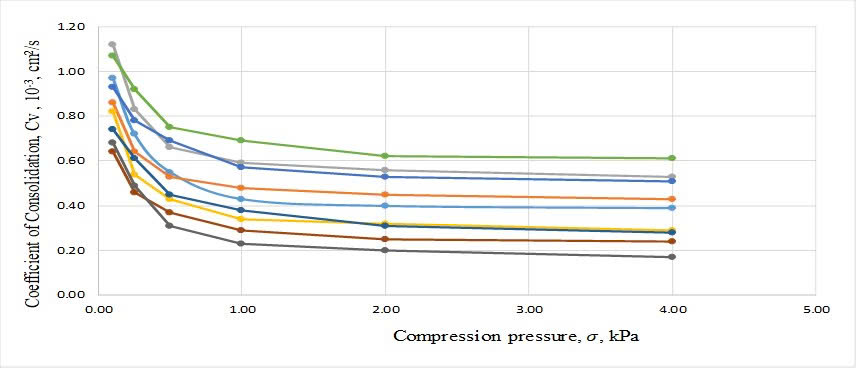
Fig. 5. Variations in coefficient of consolidation with compression pressure
In order to clarify the effect of physical properties, organic content of soft soil on the compression index, the relationship between them was established.
First, the relationship between compression index and the natural water content was determined and provided in Figures 6,7. An increase in natural water content from 29% to 94.4% resulted in an increased in compression index from 0.175 to 1.329. It can be seen that the increase in the natural water content resulted in an increase in compression index. In these soils, the mineral composition include illite, kaonilite, and monmorillonite, and cholorite in which the common clay mineral was illite or kaolinite, and the amount of montmorillonite was low (Nu at al., 2020). Moreover, the permeability of soft soil is low (Nu, 2014). It was interesting to see that in these soils, organic matter content changed from 1.6% to 20.2% and an increase in organic matter content resulted in compression index. It was also depends on the clay content in these soil. All these factors could be effected on the natural water content and compression index.
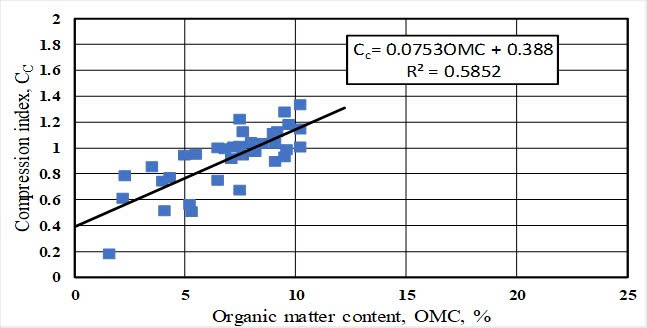
Fig. 6. Correlation between compression index and organic matter content
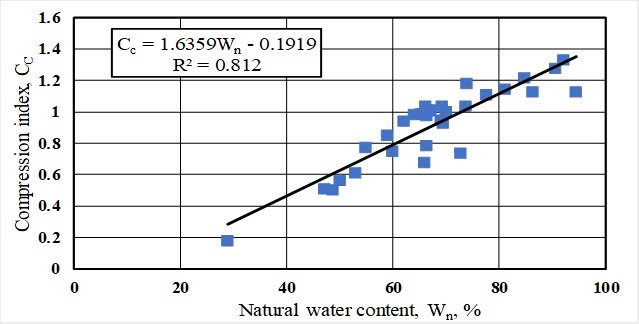
Fig. 7. Correlation between compression index and natural water content
Second, the relationship between compression index and the liquid limit (LL) was established and presented in Figure 8. It can be shown that the increase in the liquid limit resulted in an increase in compression index. It is consistent of the result of Nu (2014) and the reason for this is the high of organic matter content, the clay content, the presence of illite, montmorilonit in these soils. This is also believed that the increase in liquid limit made a high compressibility of soil and resulted in an increase in compression index.
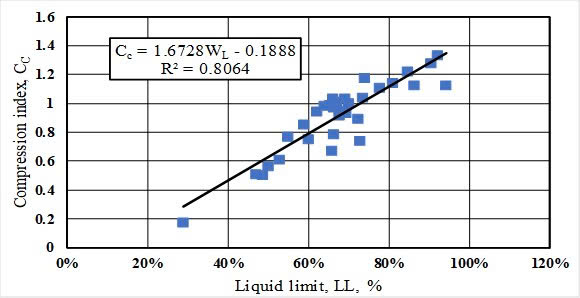
Fig. 8. Correlation between compression index and liquid limit (LL)
Final, the relationship between compression index and void ratio are showed in Figure 9. As shown in Figure 9, it can be shown that the increase in the void ratio resulted in an increase in compression index. It is consistent of the result of Nu (2014). This is also believed that the increase in void ratio due to the high of organic matter conten, the clay content, the presence of illite, montmorilonit in these soils made a high compressibility of soil. Thus, the compression index increases.
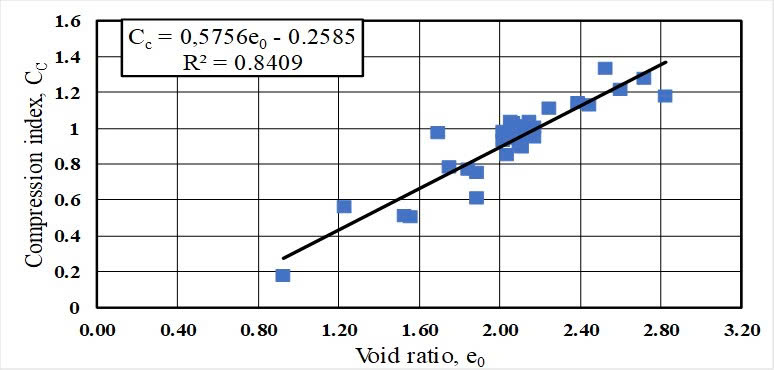
Fig. 10. Correlation between compression index and void ratio
The linear regression relationship between compression index and natural water content, liquid limit, void ratio are shown in Figure 6,7,8,9,10. These relationships are shown in Table 3.

The relationship is different with the research of in Al-Khafaji at el. (2015), Jain at el. (2015), Nu (2014) as shown in Table 4.
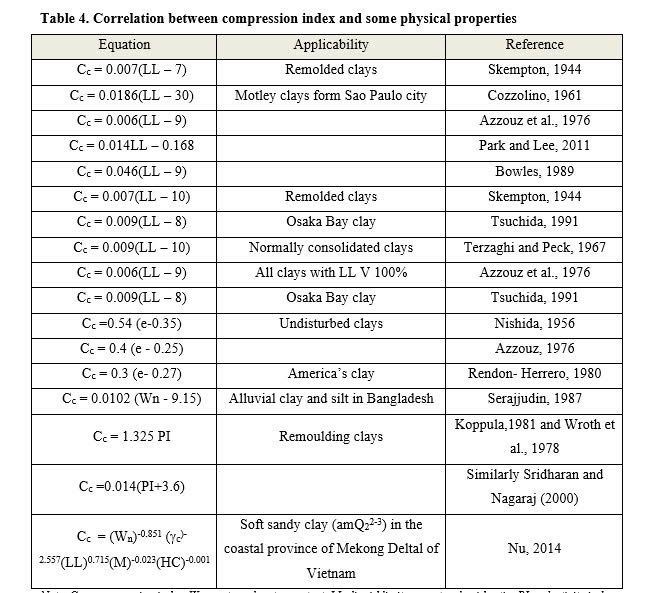
Note: Cc – compression index, Wn – natuaral water content, LL- liquid limit, e – natural void ratio, PI – plasticity index, gc -dry unit weight, M – salt content in soft soil, HC – Organic matter content.
Jain et al. (2015) indicated the high correlation between compression index and plasticity index of soft soil in various river valley projects in India. This is believed that the increase in liquid limit resulted in increase of compression index. The Linear regression analysis of the compression index and the Plasticity Index are shown as follows Cc=0.0082PI+0.0475 with coefficient of determination R2 is 0.898.
CONCLUSIONS
Based on the results of the research on consolidation properties of soft soil in Ho Chi Minh city, the following conclusions are drawn:
- Soft soil are distributed widely on the study area, exposed on the surface and the thickness of soft soil changes up to 30 - 40m. The soil belongs to Fat clay to Lean clay in very soft state. Soft soil has high natural water content, liquid limit, void ratio.
- Soft soil has high compressibility, the compression index varies from 0.156 to 1.703 with an average of 0.830.
- Coefficient of consolidation of soft soil is small and varies from 0.052.10-3 to 3.3.10-3cm2/s with an average of 0.61.10-3cm2/s.
- The coefficient of consolidation decreases with increasing compression pressure.
- The compression index has high correlation with liquid limit, moisture content and void ratio. The increase in water content, void ratio, liquid limit resulted in increase in compression index.
ACKNOWLEDGMENTS
We would like to thank the support of Ha Noi University of Mining and Geology, Ministry of Education and Training to complete this study. We are very grateful to the reviewers for their appropriate and thoughtful suggestions to improve the paper. We also would like to thank the editor in chief and secretary of journal to help us publish our article in your journal.
REFERENCES
1. Ahmad, N. R., Harahap, I.S.H., 2016. The compression behaviour of marine clays in Malaysia. Proceedings of the 35th International Conference on Ocean, Offshore and Arctic Engineering, 1–6.
2. Al-Khafaji, A.W., Maillacheruvu, K.Y., Sainz, M., Neuman, R., 2015. Analysis of empirical compression index equations using the liquid limit. Implementing Innovative Ideas in Structural Engineering and Project Management.
3. Bo, W.M., Arulrajah, A., Sukmak, A.P., Horpibulsuk, S. (2015).Mineralogy and geotechnical properties of Singapore marine clay at Changi. Soils and Foundations, 55(3), 600 – 613.
4. Bo, M.W, Choa, V., Chu, J., Arulrajah, A., and Horpibulsuk, S. (2017). Laboratory Investigation on the Compressibility of Singapore Marine Clays. Marien Georesources and Geotechnology, 35(6).
5. Chu, J., Bo, M.W., Chang, M. F., and Choa, V. (2002). Consolidation and permeability properties of Singapore marine clay. Journal of Geotechnical and Geoenvironmental Engineering, 128(9), 724 – 732.
6. Duong, N.T, Nu, N.T. Effect of different types of rice husk ash on some geotechnical properties of cement-admixed soil, Iraqi Geological Journal, ISSN 2414-6064, Vo.53, No.2C, 2020, 1-12
7. Giao, P.H., Hien, D.H. (2007) Geotechnical characterization of soft clay along a highway in the Red River Delta. J Lowl Technol Int 9, 18 – 27.
8. Jain, V.K., Dixit, M., Chitra, Dr. R. (2015). Correlation of Plasticity Index and Compression Index of Soil. International Journal of Innovations in Engineering and Technology (IJIET),5(3), 263 – 270.
9. Larsson.R (1986). Consolidation of soft soil, Swedish Geotechnical Institute, Linkiiping. Report No.29.
10. Nguyen Thi, N., Thinh, P.H., Son, B. T. Utilizing coal bottom ash from Thermal Power Plants in Vietnam as partial replacement of aggregates in concrete pavement. Journal of Engineering.
11. Nu, N.T, Toan, D.M., D.M, Tinh, N.V (2011). Determining the parameters of consolidation of amQ22-3 soft to very soft clay (CL, CH) distributed in Soc Trang area for calculating settlement of soil and ground improvement by vertical drains method. Journal of Mining and Earth Sciences, 32 – 39 (In Vietnamese).
12. Nu, N.T.(2014). Researching of engineering geological properties of soft clayey soil amQ22-3 distribution in the coastal provinces of Mekong delta for ground improvement for road construction, Doctoral thesis in Geology (In Vietnamese).
13. Nu, N.T, Duong, N.T., Phong, N.V. (2019). The effects of salt contents on the geotechnical properties of some soft soils in the coastal area of Vietnam. Journal of Mining and Earth Sciences, No. 60, Vol.6, 51 – 60.
14. Nu, N.T., Son. B.T, Ngoc, D. M. (2019). Experimental study of reusing coal ash for base course of road pavement. Electronic Journal of Geotechnical Engineering, 945 – 960.
15. Nu, N.T and Thinh, P.T. Soft soils in the Me Kong Delta of Vietnam. ActuAlscience, 4(1), 24 – 31.
16. Nu, N.T., Toan, D.M., Thinh, P.H, Son, B.T. Determination of Particles and Minerals Content in Soft Clay Soil of the Mekong Delta Coastal Provinces, Southern Vietnam for Inorganic Adhesives Stabilization. Determination of Particles and Minerals Content in Soft Clay Soil of the Mekong Delta Coastal Provinces, Southern Vietnam for Inorganic Adhesives Stabilization. Iraqi Journal of Science, 61(4), 791 – 804.
17. Nu, N.T, Duong, N.T, Son, B.T, Thinh, P.H., Investigation of salt, alum content in soft soils and their effects on soil properties:Case study in coastal areas of Vietnam, Iraqi geological Journal, ISSN 2414-6064, Vo.53, No.2A, 2020, 19-34.
18. Nu, N.T., Son, B.T, Dung, T.L.The potential of using fine rock for replacing soft soil inconstruction of a breakwater at Chan May port, Journal of Mining and Earth Sciences, No. 61, Vol.4, 75-85.
19. O’kelly, B.C (2006), Compression and consolidation anisotropy of some soft soils. Geotechnical and Geological Engineering, 24, 1715 – 1728.
20. Son, B.T, Nu, N.T, Duong, N.T, Ngoc, D.A. Application the point foundation (PF) method for soft soil improvement: a case study from Vetnam, Iraqi Geological Journal, ISSN 2414-6064, Vo.53, No.2D, 2020, 1-18.
21. Radhika, B.P, A. Krishnamoorthy, Rao, A. U. (2017). A review on consolidation theories and its application. International Journal of Geotechnical engineering.
22. NAWAPI - Southern Water Resources Planning and Investigation Federation (2010), Engineering geological maps and hydrogeological maps, map scale 1:50.000.